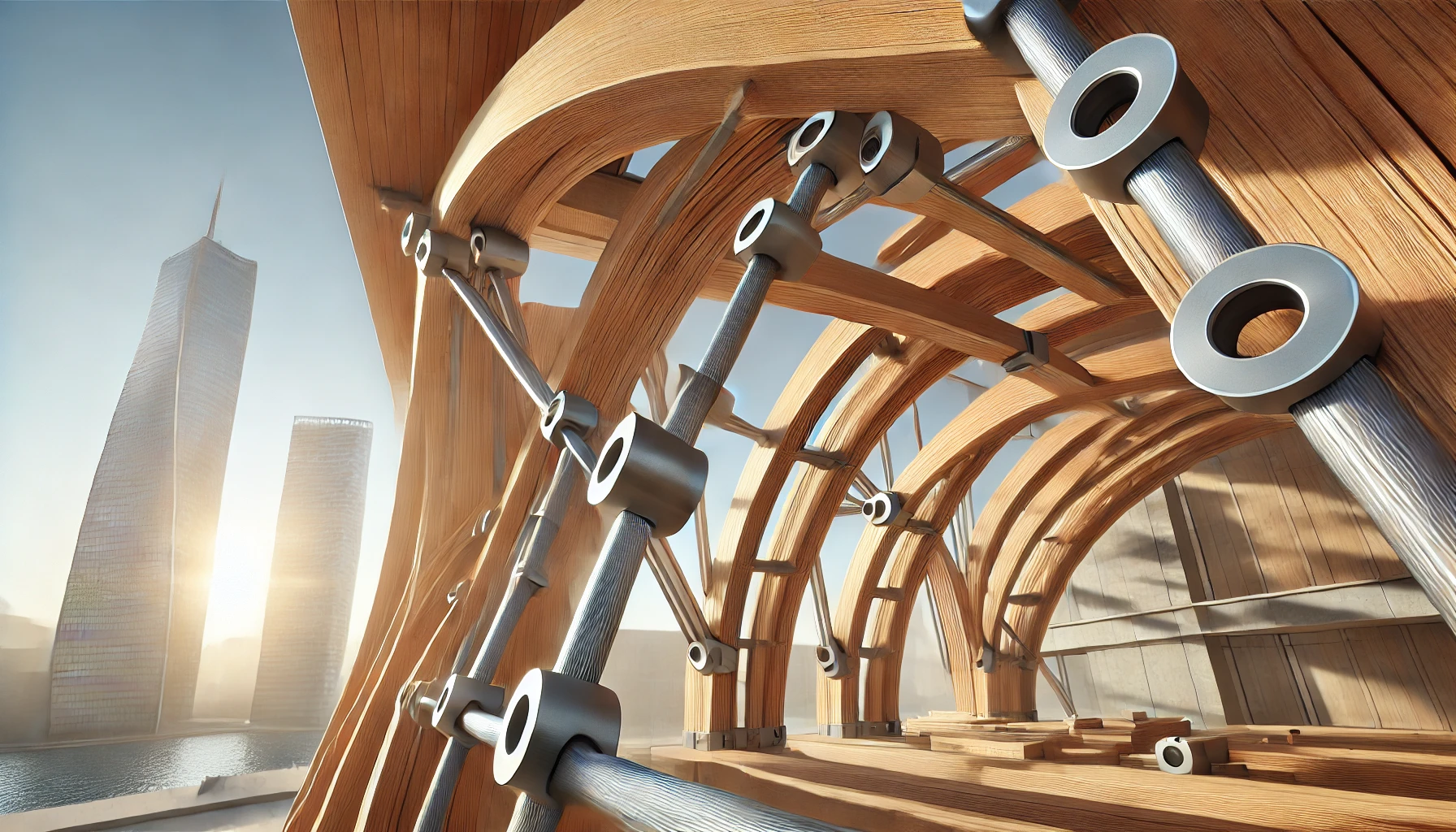Wood, meet steel! The relationship between these two might sound like an odd couple, but in architecture, they’re a dream team. Wooden arch-steel connection nodes, or 木板 拱 钢连接节点, bring strength, flexibility, and a touch of eco-friendliness to modern construction. This blog post will walk you through why these connections matter and how they’re transforming everything from bridges to buildings.
What is 木板 拱 钢连接节点?
In simple terms, 木板 拱 钢连接节点 refers to the structural connections that marry the flexibility of wood with the strength of steel. They’re common in structures needing both stability and beauty—think of large timber-framed buildings or intricate wooden arches supported by sleek steel components. Essentially, these nodes allow the best of both materials to shine.
Common Uses
You’ll find 木板 拱 钢连接节点 in various projects, including:
- Bridges that need to withstand high loads and environmental stress.
- Buildings where architectural beauty and resilience are paramount.
- Pavilions that bring aesthetic and structural ingenuity together.
Importance of 木板 拱 钢连接节点 in Modern Construction
Wood brings a timeless charm, but it’s the partnership with steel that offers the stability to support larger and more complex structures. it is flexible, allowing structures to handle stress without breaking, while steel provides the unyielding backbone.
Wood is renewable, and by pairing it with steel, we can reduce the volume of concrete needed—resulting in a lighter environmental footprint. This approach is particularly relevant in today’s construction industry, where sustainability and innovation are essential.
Key Components of Wooden Arch-Steel Nodes
Materials
A solid 木板 拱 钢连接节点 begins with selecting the right materials. Architects typically choose durable types of wood (like oak or spruce) and weather-resistant steel alloys for a long-lasting bond.
Design Specifications
For a stable connection:
- Brackets and Bolts: Help transfer loads between the wood and steel components.
- Surface Treatments: Prevent corrosion and improve the lifespan of these nodes.
Load Distribution
A well-designed node disperses the weight evenly, allowing both wood and steel to complement each other’s strengths. This load-sharing keeps the wood from cracking and the steel from bending under pressure.
Types of Connection Nodes
Understanding the various types of 木板 拱 钢连接节点 is essential for creating the right connection for each project.
Pinned vs. Rigid Connections
- Pinned Connections: Allow slight movement, making them ideal for structures that need flexibility, like long bridges.
- Rigid Connections: Offer a fixed, immovable bond, which is crucial for highly stable frameworks.
Advantages and Limitations
- Pinned Connections: Perfect for situations where a structure needs to adapt to stress without cracking.
- Rigid Connections: Essential for structures requiring unyielding support, though they can be less forgiving under high tension.
Design Challenges and Solutions
Challenges
Mixing materials like wood and steel can be tricky. Issues include:
- Expansion and Contraction: Different rates of expansion for wood and steel.
- Compatibility: Balancing the unique properties of each material.
Solutions
Engineers have developed innovative techniques:
- Pre-tensioning: To handle temperature-induced expansion.
- Hybrid Materials: Using composite materials to bridge the gap between wood and steel.
Key Engineering Principles in 木板 拱 钢连接节点
Stress and Strain Management
Engineers must ensure that stress is evenly distributed across the node to prevent strain. This often involves intricate designs that can handle both vertical and horizontal loads without overloading any single component.
Crack Prevention Techniques
To prevent cracks in the wood, engineers might use:
- Reinforcements: Adding steel reinforcements to take on excess load.
- Protective Coatings: Reducing moisture absorption that can weaken wood over time.
Best Practices for Building and Installing Wooden Arch-Steel Nodes
Construction Tips
- Precision in Alignment: A small misalignment can compromise the integrity of the connection.
- Regular Maintenance: Simple steps like applying protective coatings can extend the lifespan of these nodes.
Maintenance Insights
Regular maintenance is essential. Look for:
- Signs of Corrosion on steel.
- Cracking or Warping in wood, which can indicate structural fatigue.
Real-World Applications and Case Studies
Innovative Structures
Some of the most iconic uses of 木板 拱 钢连接节点 can be found in:
- Community Pavilions: Blending aesthetics with function.
- Architectural Landmarks: Where engineers have pushed the boundaries of wood-steel designs.
Lessons Learned
These real-world examples illustrate the importance of precision in design and reveal how each project contributes to improved practices in future builds.
Future of 木板 拱 钢连接节点 in Sustainable Architecture
Trends and Innovations
With a growing focus on eco-friendly architecture, 木板 拱 钢连接节点 is expected to play a significant role. New trends include:
- Advanced Composite Materials: For even stronger, longer-lasting connections.
- 3D-Printed Joints: Allowing for custom designs that maximize both strength and flexibility.
Environmental Implications
As construction continues to embrace eco-friendly methods, 木板 拱 钢连接节点 offers an avenue for reducing concrete usage and fostering more sustainable designs.
Conclusion
木板 拱 钢连接节点 represents an exciting leap in construction, merging the best of both worlds in wood and steel. This dynamic pairing offers not only strength and stability but also a promising path towards greener, more sustainable buildings. So, next time you see an impressive wooden structure with sleek steel support, you’ll know it’s all thanks to the innovative world of 木板 拱 钢连接节点.





